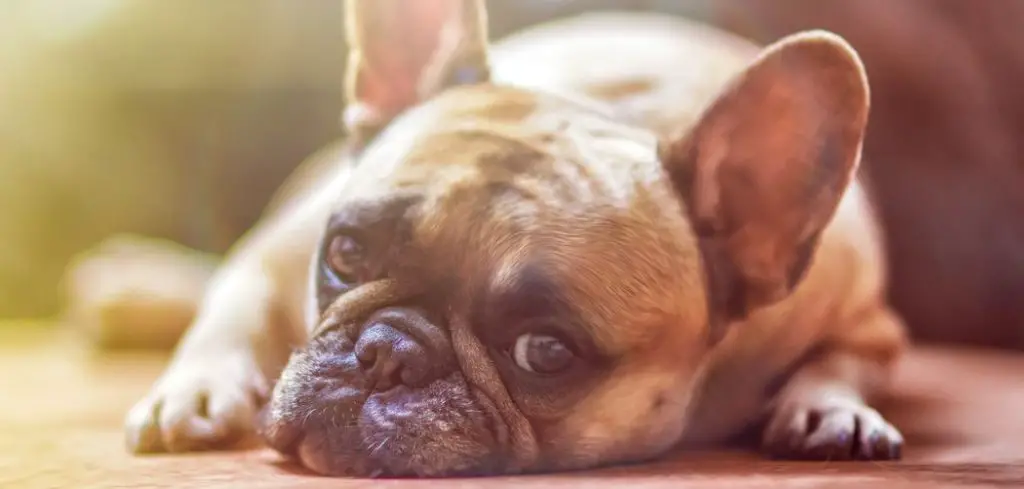If your dog is not eating but drinking water and panting, you’re right to be concerned.
These symptoms might seem subtle at first, but they often signal something deeper—whether it’s pain, illness, or emotional distress.
Drinking water without eating can indicate nausea or discomfort, and panting is usually your dog’s way of coping with internal stress. Together, they point to a situation that deserves your attention.
We outline the common reasons why this happens and what todo do.
Dog Not Eating but Drinking Water and Panting: Why It Happens
When your dog is not eating but drinking water and panting, it could be due to gastrointestinal upset, pain, heat, anxiety, infection, or chronic illness. While drinking water may suggest your dog is staying hydrated, the refusal to eat paired with panting can indicate discomfort, nausea, or internal inflammation.
These symptoms are not usually random—your dog is trying to tell you they don’t feel right.

Dog Not Eating but Drinking Water and Panting: Common Causes
Gastrointestinal Issues
A mild stomach upset is one of the most common reasons dogs stop eating.
Drinking water remains tolerable, but eating food may worsen nausea.
Panting often accompanies GI discomfort—especially with cramping, gas, or bloating.
Look for other signs like drooling, licking lips, or lying in the prayer position (front end down, hind end up).
In many cases, symptoms resolve within a day, but if they persist or worsen, see your vet.
Related: Dog diarrhea and not eating (Causes and when to worry)
Pancreatitis
Dogs suffering from pancreatitis often drink more water, avoid food, and pant from abdominal pain.
This inflammation of the pancreas is commonly triggered by fatty foods or sudden diet changes.
Dogs with pancreatitis may also seem restless, vomit, or act withdrawn.
Miniature Schnauzers and small breeds are particularly prone. Left untreated, pancreatitis can become severe, so early intervention is key.
Fever or Infection
When a dog has a fever, panting helps cool the body while a loss of appetite is almost guaranteed. Drinking water helps them stay hydrated during the illness.
Infections like UTIs, respiratory issues, or even systemic illnesses can present this way.
Other signs might include nasal discharge, shivering, or warm ears.
If you suspect a fever, check your dog’s temperature—anything over 102.5°F warrants a vet visit.
Pain or Internal Discomfort
Dogs in pain—whether from joint issues, back problems, or injury—may pant excessively and avoid food.
Drinking water is often easier and less painful than eating, especially if chewing aggravates the discomfort.
You might notice your dog acting withdrawn, hesitant to lie down, or changing positions frequently.
Senior dogs, in particular, are prone to joint pain and dental issues that impact eating habits.
Heat or Overheating
Hot weather or lack of ventilation can cause dogs to pant and seek water to stay cool.
If your dog is panting heavily, not eating, but still drinking, consider whether they may be overheated.
Flat-faced breeds and dogs with thick coats are more vulnerable.
If they’re also drooling, acting weak, or lying flat, cool them down immediately and call your vet.
Anxiety or Stress
Stressful situations like moving homes, loud noises, or separation can cause panting and reduced appetite.
However, most dogs will still drink water when mildly stressed.
If your dog is pacing, hiding, or acting unusually clingy, emotional stress could be the trigger.
While short-term anxiety might resolve on its own, recurring episodes should be addressed through training, calming aids, or veterinary advice.
Chronic Conditions or Medication Side Effects
Chronic illnesses such as kidney disease, liver issues, or Cushing’s disease may cause panting and appetite changes.
Dogs might continue to drink but refuse meals due to nausea or fatigue.
Some medications—like prednisone—also cause increased thirst and panting as side effects.
If your dog is on long-term meds and starts acting differently, talk to your vet about possible alternatives or dosage adjustments.
What to Do If Dog Not Eating but Drinking Water and Panting Happens
First, give your dog a quiet space to rest and monitor their behavior.
Offer bland food like boiled chicken and white rice in small portions, but don’t force it. Ensure access to cool, clean water at all times.
Check for other symptoms—vomiting, diarrhea, bloating, coughing, or lethargy.
Gently feel your dog’s abdomen to assess discomfort and try to take their temperature.
If symptoms persist beyond 12–24 hours or escalate in severity, don’t wait—call your vet with a full description of their behavior and any recent changes.
When to Call or Visit Your Vet
Contact your veterinarian immediately if:
Your dog has refused food for more than 24 hours
Panting continues despite rest and cooling
Vomiting, diarrhea, or fever develops
You suspect your dog is in pain or has ingested something toxic
Your dog appears weak, disoriented, or is hiding abnormally
These symptoms could point to a condition that requires early treatment to prevent complications or dehydration.
Read more: Dog Panting and Not Eating or Drinking (Explained)
Key Takeaway
When your dog is not eating but drinking water and panting, it’s often a signal that something is brewing beneath the surface.
Whether it’s pain, illness, heat, or stress, your dog is trying to tell you they need support.
Don’t dismiss these symptoms—even if your dog seems otherwise alert.
Early action can help prevent worsening conditions and ensure your dog returns to feeling their best.
Always trust your instincts. You know your dog better than anyone. If something doesn’t seem right, your vet is just a call away.
